With IoT (Internet of Things),we connect everyday devices to the Internet in real time for information collection and analysis, making IoT App Development essential in business and personal endeavors. Over recent decades, this kind of technological innovation has played a part in driving business transformation towards digital. From smart home devices to wearables, these IoT applications form a connecting tissue between the digital and physical worlds, with increasing economic value potential.
The Internet of Things once seemed uncommon; today, it has become ubiquitous. Homes, workplaces, malls, grocery stores, and even rural settings are full of smart gadgets. Due to an ever-increasing need for these gadgets and sensors, IoT app development could make an attractive business proposition when starting up your company. This blog will guide you through the process of developing an IoT app. We will explain its significance, identify critical components, and discuss how best to proceed and any issues we might encounter along our journey.
Read About: Create an IoT App from Scratch
What Is The Internet Of Things (IoT)?
IoT is a collection of physical objects infused with sensors, software, and connectivity features that permit the exchange and collection of information. The objects, also known as IoT devices, vary from household appliances like thermostats and refrigerators to sophisticated industrial machines. IoT, also known as IoT or the Internet of Things, can be described as a complex web of connected devices that interact with one another in a completely autonomous way. This constant flow of information allows us to gain insight, make educated decisions, and increase efficiency in many areas of our lives, such as transportation, healthcare, agricultural management, and more.
It's fascinating that interconnection between these devices isn't just about data exchange. IoT devices can also react to the information they acquire, which triggers particular actions or modifications according to parameters that have been set. The dynamic response sets IoT aside, providing previously impossible automation and technology. A second aspect worth mentioning is IoT scaling. As more devices connect, so will opportunities for optimization and improvement across diverse industries. Smart cities can utilize IoT to manage traffic and garbage disposal, as well as precision agriculture, which uses IoT to monitor crop growth and control irrigation. The applications for IoT are numerous and broad.
What Exactly Is IoT App Development, & How It Works?
IoT App Development refers to creating software that enables devices connected via the Internet to interact and communicate with each other. IoT apps provide the brains to make the gadgets work together in a highly connected environment. The goal is to create solutions that perform well and simplify users' lives. IoT Mobile App Development ensures all devices are in sync, do not consume power, and can be learned from experience and improved in helping people.
Imagine waking up in your bedroom, and the curtains widen to let the sunshine in, as the coffee maker is in, making your preferred blend how you want it. The smart devices in your home have scanned your calendar and changed your environment to help you prepare for the morning!
It is simple to connect and manage IoT devices. Physical objects connected to the internet include sensors, cameras, thermostats, and thermostatic controllers. Now, having this information, what can be accomplished? This is how we explain:
Data Collection
IoT devices use the Internet to collect information and then send it to the IoT application. Location, temperature, humidity, and motion are other relevant data that could be part of the information.
Processing Of Data
The IoT application analyzes and examines the data to find valuable information after receiving it. It can employ various machines, algorithms, and other data interpretation methods.
User Interface
The IoT application presents users with data processed with a user-friendly interface. The app could be mobile or desktop, depending on the user's device.
User Input
The user can interact with the IoT application by providing inputs, such as changing the temperature, switching the light on, or altering the settings of the IoT device.
Device Control
Based on input from the user and the input from the user, the IoT application instructs IoT devices to execute specific actions. For example, the Software Development For IoT will instruct the user to turn the lamp on whenever the user wants to switch on the light.
Storage Of Data
The IoT app can save the information processed in an archived database for future study and reference.
Security
The IoT app should use encrypted communication protocols, authentication, and access control strategies to prevent data theft and unauthorized access.
The general rule is that the IoT application connects to IoT devices, collects information, processes it before displaying it to the end user, and controls the devices according to the user's input. The application's primary goal is to prevent and manage the devices while providing a smooth and hassle-free user experience.
Read About: Complete Guide of IoT in Mobile App Development
Benefits Of IoT Mobile App Development
IoT mobile app development can bring numerous benefits to businesses. IoT is a revolutionary technology that will assist business owners in turning their existing businesses into modern, technologically advanced ones. It is the best technology for big-scale companies, startups, and small-scale companies. Let’s have a look at the Advantages Of IoT For Business.
Real-Time Monitoring
The principal task in IoT is collecting data and the sensors derived from it. Using IoT sensor devices in mobile apps makes it easy to track every aspect, including different types of machinery production units, vehicle fleets, retail shops, and hospitals where patients receive medical treatment. These devices have sensors that can generate real-time information that can be accessed via an IoT mobile application.
Cost-Efficiency
Because of IoT app development technologies, companies can lower costs related to daily routine tasks. Monitoring equipment, for instance, helps anticipate possible difficulties and reduce risk.
Improved Analytics
You'll be amazed to learn how IoT mobile applications significantly help in data analysis. This is because IoT devices create and compile live data and transmit it to mobile applications. Therefore, they can aid businesses or brands in reaching the correct conclusion at the proper time by analyzing the information gathered.
Customer Behavior Insights
A company, for instance, could use sensors to monitor customers' behavior on websites, social media, or another location in the management system. Based on that, the business will offer solutions.
Increased Productivity
The adoption of IoT app development technology can increase productivity, particularly in manufacturing and the automatization of crucial procedures. IoT app development solutions can help you manage operations, monitor equipment conditions, and alert you of issues regularly.
Improved Customer Experience
The Internet of connected devices provides the necessary data to enhance user experience. These solutions can help identify issues and address them in the earliest stages.
Also Read: Top Tools and Platforms for IoT Development by Developers
Critical Components Of IoT App Development
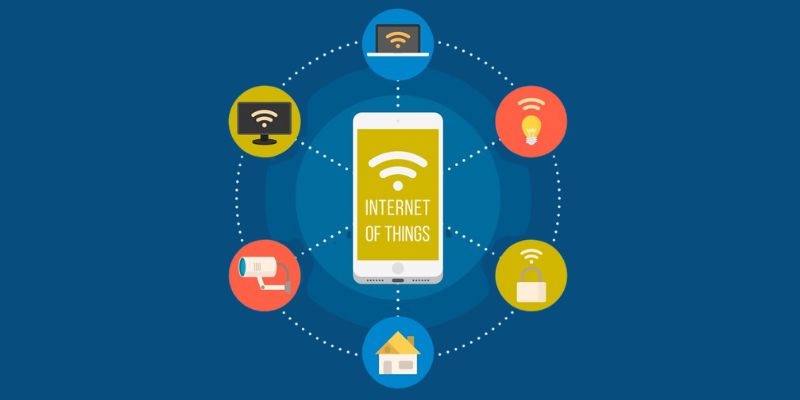
There are some essential elements in IoT IoT Development Solutions. These elements form the base of the foundation on which IoT applications are developed, allowing them to communicate with devices connected to them and gather data.
IoT Devices And Sensors
The heart of every IoT application is the sensors and devices, which form the physical components that comprise the physical layer of an IoT ecosystem. The devices outfitted with sensors and connectivity options can gather live data from their environment. They are crucial to generating accurate, valuable information, including humidity and temperature sensors, motion detection, and GPS devices.
IoT Gateways
IoT gateways are intermediaries between IoT devices and the cloud or data center, where the information is processed and evaluated. They collect data from devices, perform the initial data processing, and then transmit relevant data directly to the cloud.
IoT Platforms
An IoT platform acts as the foundation of an IoT application. It offers the tools and infrastructure required to develop, manage, and deploy IoT applications. These platforms typically include functions such as data analytics, device management, and integration with different platforms. These platforms allow Hire IoT Developers to concentrate on functionality and application logic and not worry about the infrastructure.
Connectivity To The Network
After removing the information, the device connects with the cloud via any connection. This can be achieved through various communications technologies, including wireless networks, cellular networks, RFID, LPWANs, etc. Connectivity can be activated through gateways or directly (if you require a bridge to connect different technologies).
After the various components that comprise the IoT solution have been synced, messaging protocols enter the equation. They permit users of the IoT ecosystem to share information with other devices and the cloud. DDS AMQP, DDS, and MQTT are IoT ecosystems' most widely used protocols.
Read Also: Everything You Need to Know: IoT Application Development
Steps To Develop IoT Applications
What can businesses do to succeed in developing IoT applications that align with the specific needs of a particular situation or business requirement? The answer is an integrated and well-planned procedure for IoT app development in collaboration with Best IoT Development Companies.
IoT App Conceptualizing
The first step in creating an IoT app is conceptualizing the app and then defining the goals. This is when innovation and problem-solving are key. Determine the issue you wish to resolve or what value you would like to bring to your application. Are you looking to create an application for home automation that can control different equipment? Perhaps a health app that remotely monitors patients?
Study the market, identify the intended audience, and define the essential functions and features your application should have. This is the first step in laying the groundwork for the development process. It is crucial to consider scalability and potential improvements. If you can imagine the potential of your IoT application's future growth, you can ensure that it will last with the changing world of technological advancements.
Phase Of Discovery For Hardware And Firmware
The type of hardware you need will depend on your project's needs. There are RFID tags, sensors, passive and active RFID readers, and different equipment. After you've decided on the type of hardware, you must drill deep into the general hardware structure to determine if microcontrollers or processors are necessary to process data. Your firmware's technology stack is different depending on the hardware platform. The development team must first identify the firmware's structure and solicit the needs.
IoT Architecture And UI/UX
When all the preparation is done, your IoT app development team will design the structure of the app, its major components, and their interactions. Then, your development team will sketch the system's data flow mechanics and develop data lakes and warehouses for processing information. In this phase, it is also necessary to tackle the IoT integration issues and determine the communication requirements of IoT devices. The integration scope could comprise cloud-based services, IoT Application Development Tools, and other business platforms that automate workflows and actions based on IoT incidents.
No universal connectivity solution will work with every IoT device, so mapping down the IoT connectivity map is essential. In addition to connectivity, you must choose a reliable communication technology, such as MQTT, CoAP, or HTTP, among others, to ensure secure and reliable data transfers from the device to the server and the reverse.
Design And Create Firmware As Well As Software
The technology partner you work with develops IoT applications over time, beginning with a new product version with high-value features. New functions are added to the app every two to four weeks until it reaches its complete stage.
Secure The App
As the development of IoT applications is similar to making a mini-ecosystem that consists of various components, it's naturally at risk of data breaches. It is, therefore, essential to have your IoT system employ multiple layers of security since it's being utilized in cars, homes, and healthcare equipment. The application should use the user's authentication system, encryption of data, and access rights management, among other best security techniques. Also, you should choose reputable IT businesses and trusted hardware suppliers and use the most reliable IoT app development platforms and secure networks.
IoT App Testing
Testing is essential for evaluating your app's usability, security, and reliability and IoT Web Application Development. Therefore, test your app on several platforms and devices to guarantee compatibility and speedy performance. Be aware of the diverse range of IoT app development platforms and devices and possible changes in network connectivity to find and fix any problems or issues that might arise!
Conducting rigorous penetration tests and security audits is crucial in identifying and addressing weaknesses as IoT devices are typically interconnected, which creates a bigger threat surface to attack. Secure and robust security practices, as well as regularly making updates to the application, will help protect users' data and maintain the security of IoT. IoT ecosystem.
Continuous monitoring and testing are vital to ensure the app's quality and functionality during real-world situations. Optimizing and adapting your app in line with the latest technological devices are developed. Being proactive and responding to user feedback, you can ensure that your IoT application remains an effective and reliable instrument to be a part of the growing realm of the Internet of Things.
Deploy The App
After you have tested and concluded whether "everything is in order," you can release your app to the general public using your chosen platform. Establishing a clear program and execution plan is essential. Here are some tips for starting your IoT application.
The launch strategy includes the intended audience, ways to promote the app, and the key metrics (KPIs) to gauge your success. Optimize the app stores' presence by developing a unique list of apps with captivating descriptions, images, and videos highlighting their features and functions. Following that, you can use the power of social media, influencer marketing, and other methods of marketing to help spread awareness about the app and increase downloads.
Additionally, it would help if you considered keeping track of the application's performance and customer feedback regarding problems encountered after launch. Also, you should collect and analyze the data to gauge how well the app performs against its KPIs and find opportunities to optimize.
Updates And Maintenance
Making the most of IoT solutions isn't just a matter of putting them away; monitoring the entire ecosystem is essential, even after deployment. This includes regular maintenance and troubleshooting, proactive diagnosis, and optimizing cloud-based resources. If your business needs change, you can implement new functions or enhance the functionality of your existing systems, such as network, device data, etc.
Read About: Complete Guide to Hire iOT Developer in 2024
How Much Does It Cost To Create An IoT App?
The degree of sophistication, function, and the kind of hardware to be used for the IoT devices, the Mobile App Developer expertise, and the location of your IoT device are only a handful of factors that could significantly impact the costs of creating an IoT application. The elements that affect the price of an IoT app's costs of development are listed below to assist you in determining estimates:
The Types And Number Of Gadgets
The devices can differ based on the particular application being created. Within the field of IoT (Internet of Things) applications, the variety of gadgets available is immense, reflecting the wide range of purposes and functions they serve. The gadgets they use are not identical and are designed to meet the particular requirements of the software they work with. Every device plays an essential function in capturing data, processing, and transmitting information from sensors to gateways.
Sensors And Actuators
Sensors and actuators are the basis of IoT networks. They function as eyes and hands which interact with the world. Sensors gather and analyze environmental information, ranging from temperature and humidity to movement. Actuators, in contrast, transform digital commands into physical actions, allowing IoT systems to modify their surroundings. They can be used together to provide real mentoring and control, enabling a range of uses across different industries.
Gateways And Edge Devices
Edge devices and gateways act as intermediaries between sensors on the local level and the more significant cloud infrastructure. They are located at the edges of IoT networks and are essential for tasks like data aggregation, preprocessing, and filtering prior to sending relevant information to the cloud. By minimizing latency and decreasing the amount of bandwidth used, gateways and edge devices increase the effectiveness and speed of IoT applications, especially for situations where processing in real-time is essential.
Cloud Infrastructure
This is the place that stores data, examines, and processes. The heart of IoT ecosystems is the cloud infrastructure. It's a centralized storage facility for storing and analyzing vast data. Cloud infrastructures provide the processing capabilities and storage capacities required to gain actionable insight generated by sensor data streams. Utilizing sophisticated analytics and machine-learning algorithms, cloud-based platforms can assist with automated maintenance. Also help with detection of anomalies, and other functionalities based on data vital to optimizing operations' efficiency and fostering innovation.
Integrations With Third-Parties
Connectivity is crucial for the IoT world, requiring seamless integrations to third-party applications, platforms, and devices. Through interfacing with other devices and platforms, IoT applications can leverage new capabilities, broaden their abilities, and open possibilities. Incorporating with existing infrastructure or tapping into new technology, interoperability promotes cooperation. It also speeds up the creation of new solutions specifically tailored to the industry's requirements.
Platforms
IoT platforms provide the basis on which developers can build and launch applications. The platforms offer a range of applications and tools that simplify development workflows. The most popular platforms, such as AWS IoT, Azure IoT, Google Cloud IoT, and Watson IoT, have complete solutions to manage devices, collect information, and orchestrate workflows. Pay-as-you-go pricing options and scalable infrastructure allow companies to expand their IoT deployments rapidly while improving the utilization of resources and the efficiency of their costs.
The Gadgets (Hardware)
The hardware components in IoT devices vary based on their purpose and capabilities. Every hardware component is chosen and designed by specific needs, from sensors and processors to communications modules and energy sources. Suppose you use battery-powered sensors to provide remote monitoring or industrial-grade actuators to ensure precision control. In that case, the hardware selections profoundly influence IoT technology's reliability, performance, and endurance.
The Size Of The Team And Hourly Costs
You require a skilled and experienced engineering and testing team to develop your IoT application. The choice of the technology stack, the level of complexity of the architecture, and the level of interaction required between the application and IoT devices will affect the cost of backend and frontend development. The testing component depends on the number of devices and usage scenarios that will be analyzed.
The Number Of Attributes
The features and functions in IoT applications are defined according to their particular use cases and operating requirements. Whether it's about optimizing supply chain logistics and environmental monitoring or even enabling smart home automation. Every application requires a combination of devices, platforms, integrations, and platforms by integrating technological solutions to business expectations and end users' needs. Companies can tap into IoT's potential to boost innovation, increase efficiency, and generate value across various areas.
The Challenges In IoT Software Development
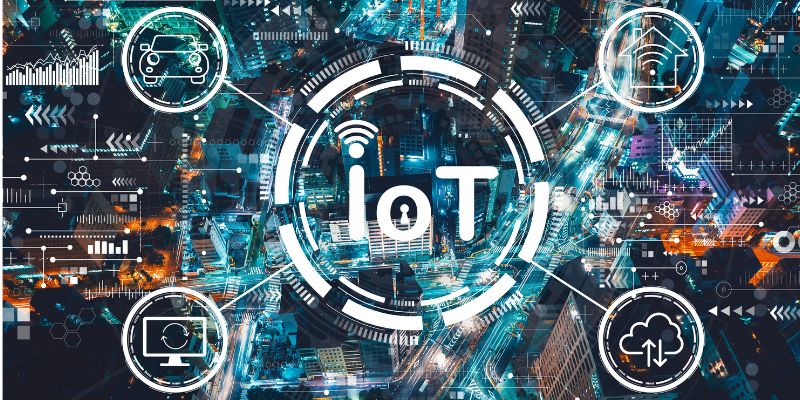
Here are a few of the most critical challenges or Risk In IoT Development:
IoT App Security Concerns
Security must be a top priority when designing IoT applications. The constant flow of data between gateways, devices, and cloud services makes ensuring security and confidentiality essential. Install secure encryption, authentication, and access control to guard sensitive information from unauthorized access.
IoT App Connectivity Issues
IoT devices typically operate in challenging and varied conditions, which can lead to connectivity problems. Insecure or weak connectivity to networks can affect data transfer speed and overall performance. Use fallback methods and alternate communications channels to guarantee reliable data transfer, even under extreme conditions.
IoT App Data Management
IoT applications generate vast amounts of data. It is essential that it be efficiently managed, which is why a scalable, reliable solution for data storage is used to manage the growing volume. Data analytics that extract valuable insights from massive data allow users to make informed choices based on the latest data.
Technological Inconsistency
Insufficient standardization has been one of the most significant technical IoT issues available. The IoT Software Development Team must combine various IoT protocols into an integrated IoT solution. Most of the time, IoT app developers provide options for connecting to the fundamental MQTT protocol—called The Message Queue Telemetry Transport—and other protocols utilized within the system of choice.
The challenges they face are manageable! Developers can conquer these obstacles by using appropriate methods and techniques and building profitable IoT applications.
IoT Market: Trends And Areas
New technologies and apps are constantly being developed. The IoT market is quickly growing, and by 2025, when technology develops at the current rate, it could have as many as 28 billion Internet of Things gadgets connected to the Internet. The technology acts as a global network that allows advanced technologies to communicate using wireless technology. Additionally, it gives the capacity to communicate and complete various activities without human interference.
In the wake of COVID-19, every social setting, like restaurants, banks, schools, and even medical facilities, has been impacted by the outbreak and forced to modify how they develop. This new norm that the COVID-19 epidemic has created has proved advantageous to the IoT Market. The development of IoT is due to advancements in technology like five-G technology, cloud computing, and artificial intelligence.
Market researchers say the global IoT market will be $1.5 trillion in 2027. The industrial IoT sector is the most significant portion of the overall market. Due to the growing acceptance of IoT technology in both businesses and consumers alike, the expansion of the IoT market is predicted to continue shortly.
IoT Development Companies and businesses who want to benefit from the potential offered by the IoT market should remain aware of current and upcoming trends as they apply to them and stay abreast of developments within it. The IoT area also contains a variety of iOS and Android applications that affect numerous areas of our lives. The manufacturing industry continues to produce various wearables that transform healthcare and wellness. Below, we've outlined the recent significant developments within the field.
Conclusion
Creating an IoT app requires a sound plan based on your company's goals. It needs users and requirements, including identifying suitable IoT devices and languages, creating a user-friendly interface, and setting up secure security procedures. Multidisciplinary approaches that combine the knowledge of software, hardware, and design for user experiences are essential to successful IoT application development. Suppose you have the right IoT Software Development company and the right equipment. In that case, anybody can create a winning IoT application that holds the potential to transform businesses and enhance the lives of people.
IoT application development has enormous potential for individuals and companies as well. Developers and teams can unlock new possibilities by comprehending the Internet of Things concept, knowing its fundamental components, implementing a structured development method, and facing the issues head-on.





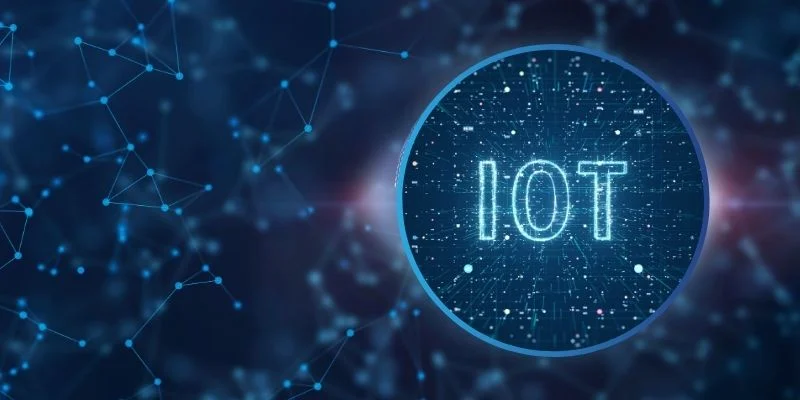


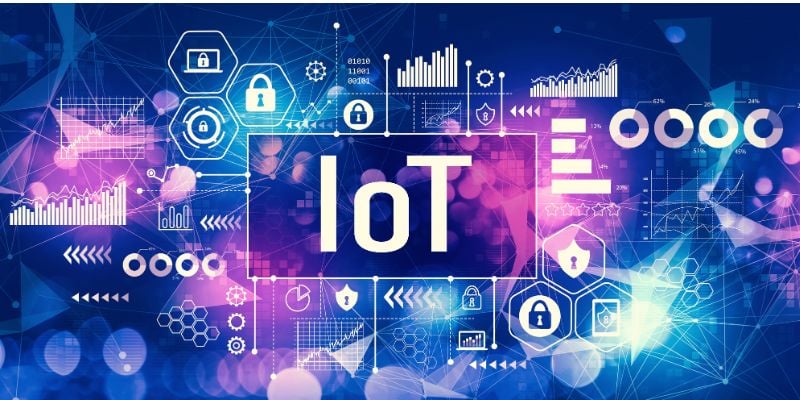
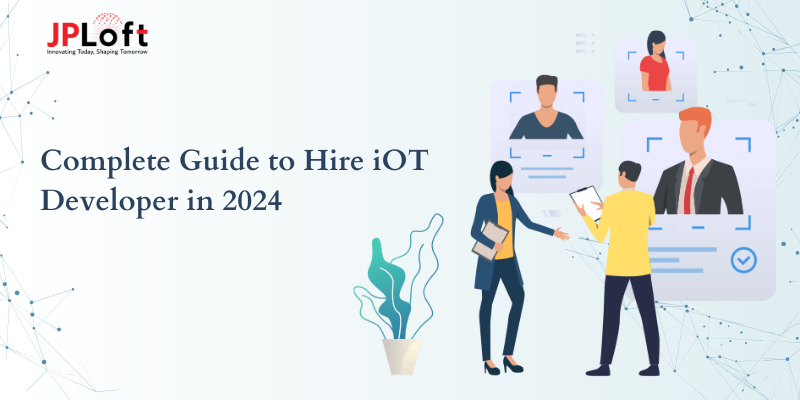
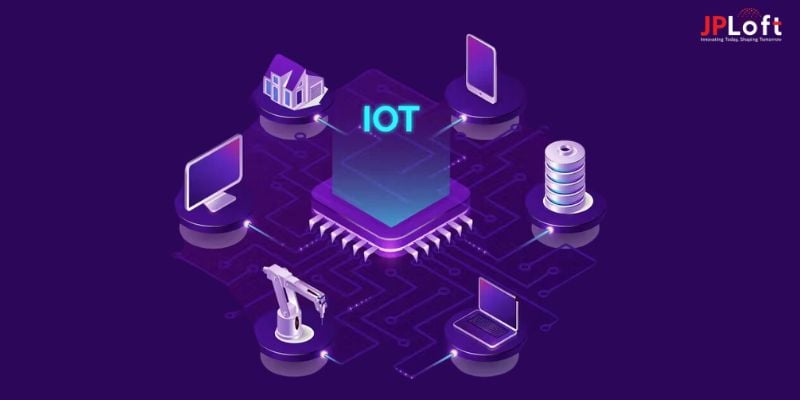


Share this blog